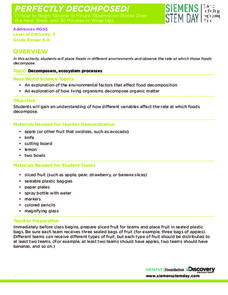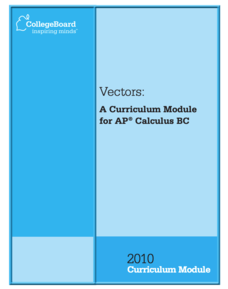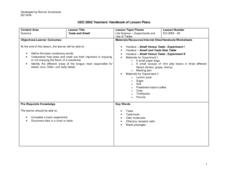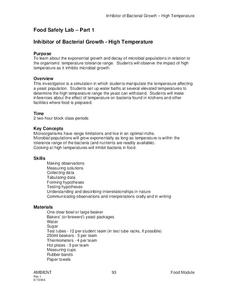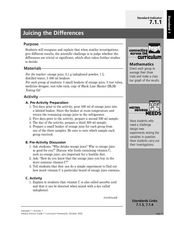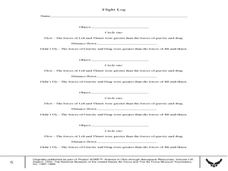Virginia Department of Education
Historical Models of Atoms
What does the past have to do with today? Young scientists find that answer as they learn more about past chemists and their significant contributions to the field. Pupils use the Internet to research historical figures...
Discovery Education
Cool It!
Adjust the melting time of ice without varying the temperature! Learners experiment with different materials to decide how the materials affect the rate an ice cube melts. They then connect their findings to the conductivity of each...
LABScI
Conservation of Momentum: Marble Collisions
What happens to the momentum of an object when it strikes another object? Scholars roll a marble down a ramp so it collides with another marble. By measuring the speed of each marble before and after the collision, pupils answer this...
US Department of Energy
The Invisible Electromagnet: A Transparent Magnetic Field Viewer
Audio speakers, hard drives, credit cards, and even the earth use magnetic fields. While we observe the effect of magnetic fields, we can't actually see them. A viewer helps participants explore magnetic fields, some of the items that...
Discovery Education
Perfectly Decomposed!
We all know someone who won't eat the banana with a brown spot, the grape with a dimple, and the apple with a bruise. Scholars use different fruits to explore what happens when fruits really start to decompose. They set up an experiment...
Curated OER
Locating Information Quickly in a Variety of Resources
Here is a activity which may be best suited for a library science teacher, or one that can be done by a regular teacher when in the library. In it, learners explore the best ways to use print and electronic resources to find information...
College Board
Vectors: A Curriculum Module for AP® Calculus BC
It is all in a matter of time. The model curriculum module uses parametric equations and vectors to solve problems dealing with particle motion along a curve. At the beginning of the lesson, the unit reviews parametric equations and...
Curated OER
Candlemaking
There might not be a butcher or baker, but you'll have a class full of candlestick makers after a hands-on lesson about candles make from beeswax. After a brief history of where beeswax comes from, young artisans craft their own...
Curated OER
Taste and Smell
Students experiment with sense of smell, and how it relates to sense of taste.
Curated OER
Science: Draining the Land - the Mississippi River
Students use topographic maps to identify parts of rivers. In addition, they discover gradient and predict changes in the channels caused by variations in water flow. Other activities include sketching a river model with a new channel...
Curated OER
Denser Sensor
Fourth graders calculate density, compare densities of solids and liquids, measure liquids using a balance, and investigate the significance of density. They conduct an experiment to determine an order of densities, and complete a...
Curated OER
Snack Attack: Food Packaging Activity
Students design and create packaging material for food. In this snack attack lesson, students design a package to protect a food item from heat and water. Students consider costs of materials, design, and test the package to see if it is...
Curated OER
Designing Windmills
High schoolers study mechanical engineering and how it plays a part in the creation of windmills. They design and test their own windmills using various materials and sail designs.
Curated OER
Floor Polish Experiments
Students compare various brands of floor polishes and test their durability and appearance. In this floor polish lesson students test different polishes and check performance.
Curated OER
Healthy Water!?
Young scholars test water for its quality and record their information.In this water quality lesson, students investigate water for pH, macro invertebrates and identify its characteristics. Young scholars complete worksheets on their...
Curated OER
Adhesives: How Sticky is Your Tape?
Students test the adhesive strength of different tapes. For this adhesive lesson, students conduct an experiment to test the shear strength of the adhesives, take measurements, record data, and draw conclusions to explain each product's...
Curated OER
Food Safety Lab
Learners determine the optimal living conditions for yeast and apply these results to microbes in food. For this microbiology lab lesson, students observe the reaction of yeast to elevated temperatures. They relate these results to safe...
Curated OER
Billions of Bubbles
Learners conduct an experiment with bubbles. For this observation and comparison lesson, students read Bubbles, Bubbles, Everywhere and conduct an experiment where they test different kinds of liquids to see which is the best for a...
Curated OER
Adhesives: Measuring Stickiness
Students test the stickiness of natural substances. In this adhesion as a property of matter lesson, students build a tool to test the adhesion of natural "glues" such as honey, peanut butter, flour and water paste, and jelly. Students...
Curated OER
Sounds Good to Me
Students determine density and hardness of wood samples based on several investigations. In this physical science and music lesson, students visit four centers and perform tests on wood samples to determine densities and hardnesses. They...
Curated OER
Juicing the Differences
Seventh graders investigate the vitamin C content of orange juice. In this chemistry lesson, 7th graders analyze the variables that cause result variation in their experiment. They design a new experiment to test variables in question.
Curated OER
Earthquake Proof Structures
Eighth graders build a structure that is able to withstand a simulated earthquake. They research earthquakes, earthquake measurement, and society's preparation for and reaction to them. Pupils build models and present them to the...
Curated OER
TE Lesson: Using Heat from the Sun
Students examine fossil fuels, nuclear and renewable fuels. They study investigate types of heat transfer such as convection, conduction, and radiation. They complete crossword puzzles based on the vocabulary. They design, construct and...
Curated OER
Household Things that Fly and Why!!!
Learners examine the four forces of flight. In this flight lesson, students test to see which types of items will fly. Learners make predictions on whether the item will fly or not. Students gain knowledge about lift, gravity, thrust and...
Other popular searches
- Science Test Preparations
- Science Test Preparation 2
- Primary Science Fair Testing
- Fair Testing Science






